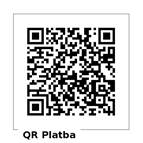Acute Treatment
Acute attack (relapse) is defined as new or recurring symptoms lasting at least 24 hours in the absence of fever or infection. Its treatment consists in administering corticosteroids, either intravenously or orally.
Corticosteroids are medicines derived from the hormones of adrenal cortex. They have a non-selective immunosuppressive effect; they have effect on all the stages of an inflammation response. Each medicine has different parameters. Normally, 3 g of methylprednisolone are used for treatment; if the attack is severe, the dose can be doubled (0.5 – 1 g per day is mostly administered in the morning hours).
Due to the fact that loss of myelin and axons occurs in the acute nidus, it is necessary to commence treatment in time in order to limit the damage to the tissue. The formerly advocated opinion that it is only necessary to treat an attack, which strongly bothers the patient with its symptoms, has become obsolete.
Before corticosteroids are administered, it is necessary to find out whether the patient is not suffering from an acute infection or an ulcer disease or whether the patient does not have propensity to thrombosis. During the administration, the patient feels bitterness on their tongue and their face may turn red; the patient may feel weak or, conversely, agitated and may experience palpitation (racing of heart). It is necessary to monitor the mental state of the patient, particularly when corticosteroids are administered for the first time. Depression may get worse; euphoria may occur; psychotic symptoms may also occur, albeit rarely. During a corticosteroid treatment, we protect the digestive tract and we replenish potassium, which is excluded at an increased rate (bananas and apricots are sufficient).
If the patient is not subjected to a long-term immunomodulating treatment, it is possible, after completion of the methylprednisolone treatment, to continue by tapering oral corticoids (prednisone or methylprednisolone), that is, by gradually reducing the doses to zero. The doses are determined according to the state of the patient and their tolerance to corticoids.
If an acute attack is very severe and the response to the corticosteroid treatment is insufficient, it is possible to proceed to carry out a series of procedures that are referred to as “plasmapheresis”. This method of treatment, which consists in removing, treating and returning blood plasma to blood circulation, is also used for other neurological autoimmune diseases. Plasmapheresis is carried out every other day, usually 5 – 7 times. After the procedure, it is necessary to prevent any traumas (especially falls).

